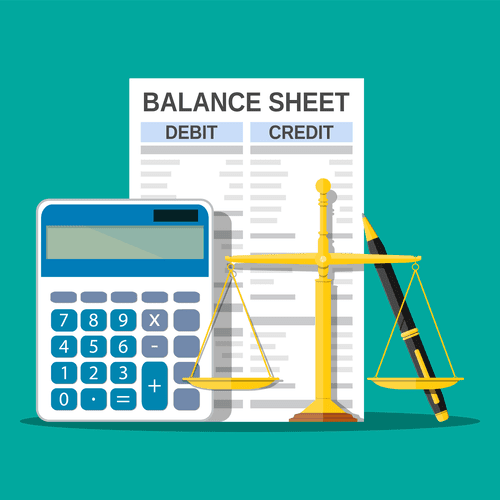
The most important thing to remember when working with the allowance methods for bad debt is to know what you have calculated! Once you figure a dollar amount, ask yourself if that amount is the bad debt expense or the allowance. If it is the allowance, you must then figure out how much bad debt to record in order to get to that balance. The entry from December 31 would be added to that balance, making the adjusted balance $60,500. The percentage of sales method does not factor in the existing balance in Allowance for Doubtful Accounts.

Impact on Financial Statements
If the customer’s balance is written off as uncollectible, there is nothing to apply the payment against. If the company applies the balance against the customer’s account, the entry would cause a negative balance or an amount due to the customer. In order to accept the payment, the company must first restore the balance to the customer’s account.

Present Real-World Examples of Companies Using Each Method

Default in debt provided to a client or a third party can be a major pain point for businesses. Accounting for them in the books is an integral part of managing the risks of the business. The two models used for such provisions are the direct write-off method accounting and the allowance method. Inevitably some of the amounts due will not be paid and the business will need to have a process in place to record these bad debts. How long is appropriate for a company to leave past due A/R on the books before writing it off?

The Direct Write off Method vs. the Allowance Method
We used Accounts Receivable in the calculation, which means that the answer would appear on the same statement as Accounts Receivable. Therefore, we have to consider which of our accounts would appear on the balance sheet with Accounts Receivable. Allowance for Doubtful Accounts is a contra-asset account so that is what we calculated. The adjusted balance in Allowance for Doubtful Accounts should be $31,800. Since the current balance is $17,000, we need retained earnings to increase the balance to $31,800.
- After the realization, the company will record the amount due in the bad debt expense.
- The company usually calculate bad debt expense by using the allowance method.
- Industry practices in bad debt accounting vary based on the size, nature, and complexity of the business.
- For example, on September 05, 2020, the company ABC Ltd. decide to write off Mr. D’s account with the receivable balance of USD 2,000.
- Keeping bad debt in AR will increase AR and days sales outstanding (DSO).
However, businesses with significant A/R should recognize bad debts for financial reporting purposes to avoid overstating your revenue and A/R. Otherwise, you may opt to write off bad debts individually as they become worthless. Instead of using the bad debts expense account, we debited the allowance account instead.
- This entry reduces the accounts receivable and recognizes the bad debt expense in the income statement.
- Publicly traded companies that follow the Generally Accepted Accounting Principles (GAAP) and are regulated by the SEC use the direct write-off method.
- Unlike the Allowance Method, which estimates bad debts in advance, the Direct Write-Off Method records bad debts as they occur.
- On the other hand, bad debt can trigger policy changes that improve a company’s credit policy and B2B credit management.
- This method violates the GAAP matching principle of revenues and expenses recorded in the same period.
- The specific action used to write off an account receivable under this method with accounting software is to create a credit memo for the customer in question, which offsets the amount of the bad debt.
- This estimation shows the anticipated amount that will go to provision for doubtful debts.
- GAAP requires that expenses be matched with the revenues they help generate within the same accounting period.
- Bad debts are considered an expense since they occur in the normal course of business.
- For example, the debtors’ business is bankrupt due to Covid-19 and they could not effort to pay off its debt that is own to the company.
- The exact amount of the bad debts is deducted from the reserve account.
- Therefore, the allowance method is considered the more acceptable accounting method.
After the realization, the company will record the amount due in the bad debt expense. However, the balance will be back to be normal after adjusting entry for bad debt because the company will add the debit balance to the required balance in the adjusting entry. Bad debt expense is something that must be recorded and accounted for every time a company prepares its financial statements. When a company decides to leave it out, they overstate their assets, and they could even overstate their net income. The two methods used in estimating direct write-off method bad debt expense are 1) Percentage of sales and 2) Percentage of receivables.
Bad Debt Expense Journal Entry, Methods & Examples
Thus, the company cannot enter credits in either the Accounts Receivable control account or the customers’ accounts receivable subsidiary ledger accounts. If only one or the other were credited, the Accounts Receivable control account balance would not agree with the total of the balances in the accounts receivable subsidiary ledger. Without crediting the Accounts Receivable control account, the allowance account lets the company show that https://www.bookstime.com/articles/period-costs some of its accounts receivable are probably uncollectible. In the allowance method, businesses create an allowance for doubtful accounts, which serves as a contra-asset account on the balance sheet.
